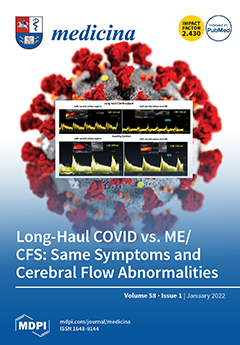Background and Objectives: Acute heart failure (AHF) is a common disease and a cause of high morbidity and mortality, constituting a major health problem. The main purpose of this study was to determine the impact of multiorgan ultrasound in identifying pulmonary hypertension (PH), a major prognostic factor in patients admitted due to AHF, and assess whether there are significant changes in the venous excess ultrasonography (VE × US) score or femoral vein Doppler at discharge.
Materials and Methods: Patients were evaluated with a standard protocol of lung ultrasound, echocardiography, inferior vena cava (IVC) and hepatic, portal, intra-renal and femoral vein Doppler flow patterns at admission and on the day of discharge.
Results: Thirty patients were enrolled during November 2021. The mean age was seventy-nine years (Standard Deviation–SD 13.4). Seven patients (23.3%) had a worsening renal function during hospitalization. Regarding ultrasound findings, VE × US score was calculated at admission and at discharge, unexpectedly remaining unchanged or even worsened (21 patients, 70.0%). The area under the curve for the lung score was 83.9% (
p = 0.008), obtaining a cutoff value of 10 that showed a sensitivity of 82.6% and a specificity of 71.4% in the identification of intermediate and high PH. It was possible to monitor significant changes between both exams on the lung score (16.5 vs. 9.3;
p < 0.001), improvement in the hepatic vein Doppler pattern (2.4 vs. 2.1;
p = 0.002), improvement in portal vein Doppler pattern (1.7 vs. 1.4;
p = 0.023), without significant changes in the intra-renal vein Doppler pattern (1.70 vs. 1.57;
p = 0.293), VE × US score (1.3 vs. 1.1;
p = 0.501), femoral vein Doppler pattern (2.4 vs. 2.1;
p = 0.161) and IVC collapsibility (2.0 vs. 2.1;
p = 0.420).
Conclusions: Our study results suggest that performing serial multiorgan Point-of-Care ultrasound can help us to better identify high and intermediate probability of PH patients with AHF. Currently proposed multi-organ, venous Doppler scanning protocols, such as the VE × US score, should be further studied before expanding its use in AHF patients.
Full article






